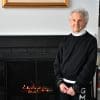KENT—The Kent Historical Society’s annual meeting will take place Sunday, Nov. 5, at 2 p.m. at Kent Town Hall. After a brief meeting, author and historian Marty Podskoch will present a program on the Civilian Conservation Corps Camps in Connecticut, one of which was in Kent.
All are welcome.
Podskoch is a retired teacher and the author of 11 books. He is currently gathering information on the CCC camps in Vermont and Massachusetts for future books. Podskoch is keenly interested in meeting individuals who may have CCC stories and photos to contribute to his next book.
The Civilian Conservation Corps (CCC) began on March 31, 1933, under President Roosevelt’s “New Deal” to relieve the poverty and unemployment of the Depression. CCC camps were set up in a few Connecticut towns, state parks and forests. Workers built trails, roads, campsites and dams, stocked fish, built and maintained fire tower observers’ cabins and telephone lines, fought fires, and planted millions of trees. The CCC disbanded in 1942 when men were needed for World War II.
Connecticut had 21 CCC camps. In the first year, 13 camps were set up in West Cornwall, Niantic, Hampton, Haddam, Union, New Fairfield, Voluntown, Thomaston, East Hartland, West Goshen, Clinton and Burrville.
In the following years eight camps were added in Winsted, East Hampton, Danbury, Stafford Springs, Portland, Windsor, Madison and Kent, where Macedonia Brook was developed.
Enrollees signed up for six months and worked a 40-hour week for $30 a month. The government sent $25 to the enrollee’s family and the worker received $5, but they were also fed good food, given uniforms and medical care. In the beginning, the men they lived in tents; later they had wooden barracks.
In nine years, 2.5 million young men participated in restoring public appreciation of the outdoors.
Contact director@kenthistoricalsociety.org with questions.






































